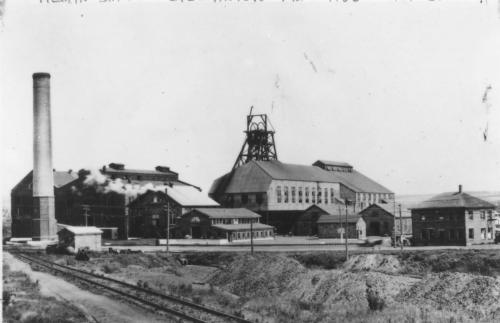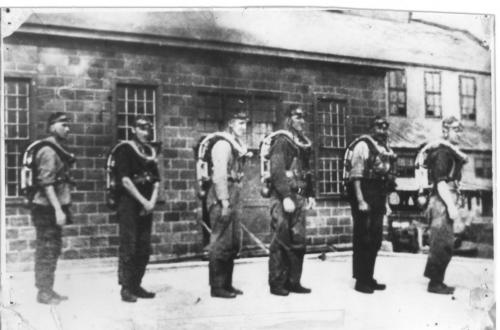
The Worst Disaster
The worst disaster in the Pictou coalfield happened on January 23, 1918. Around 5:30 pm a great plume of smoke burst from the main shaft of the Allan mine (aka Allan Shaft). A second cloud of dark smoke billowed out shortly after. Ninety-seven men were labouring in the deeps. In the immediate aftermath, nine at work near the 476-foot level made it to the cage (open elevator) stop, signalled, and were lifted to safety. From then on, despite repeated lowerings of the cage, it was brought up empty. Meanwhile, the smoke and bleating of the pit whistle called an anxious crowd to the mine yard as draegermen descended the pit, only to find utter devastation throughout the whole mine and no living person.
88 Dead

Once it was ascertained there were no more fires and gas, ventilation was restored and barefaced miners from the community were able to help clear the wreckage, until they were called back to their own mines to get out coal, desperately needed for the war (World War 1) effort. For several months, rescue workers toiled, bringing up bodies as they found them. The last of the 88 dead was recovered on May 27; barely a family in the mining community was untouched by this disaster, some losing two or more loved ones.
The Cause
The Coroner’s Inquiry was unable to determine a definitive cause for the explosion. They identified the probable location as No. 2 bord at the 1200-foot level, with the likely cause being a shot that blew backwards. Rumours circulated that local miners of Austro-Hungarian descent blew up the mine as an act of war (World War I was nearing its end). A detective was brought in, but no proof of sabotage was found, and once restored, the Allan resumed producing coal. Over the next 31years the mine endured six more explosions and numerous fires, the last of which forced its closure in 1951.